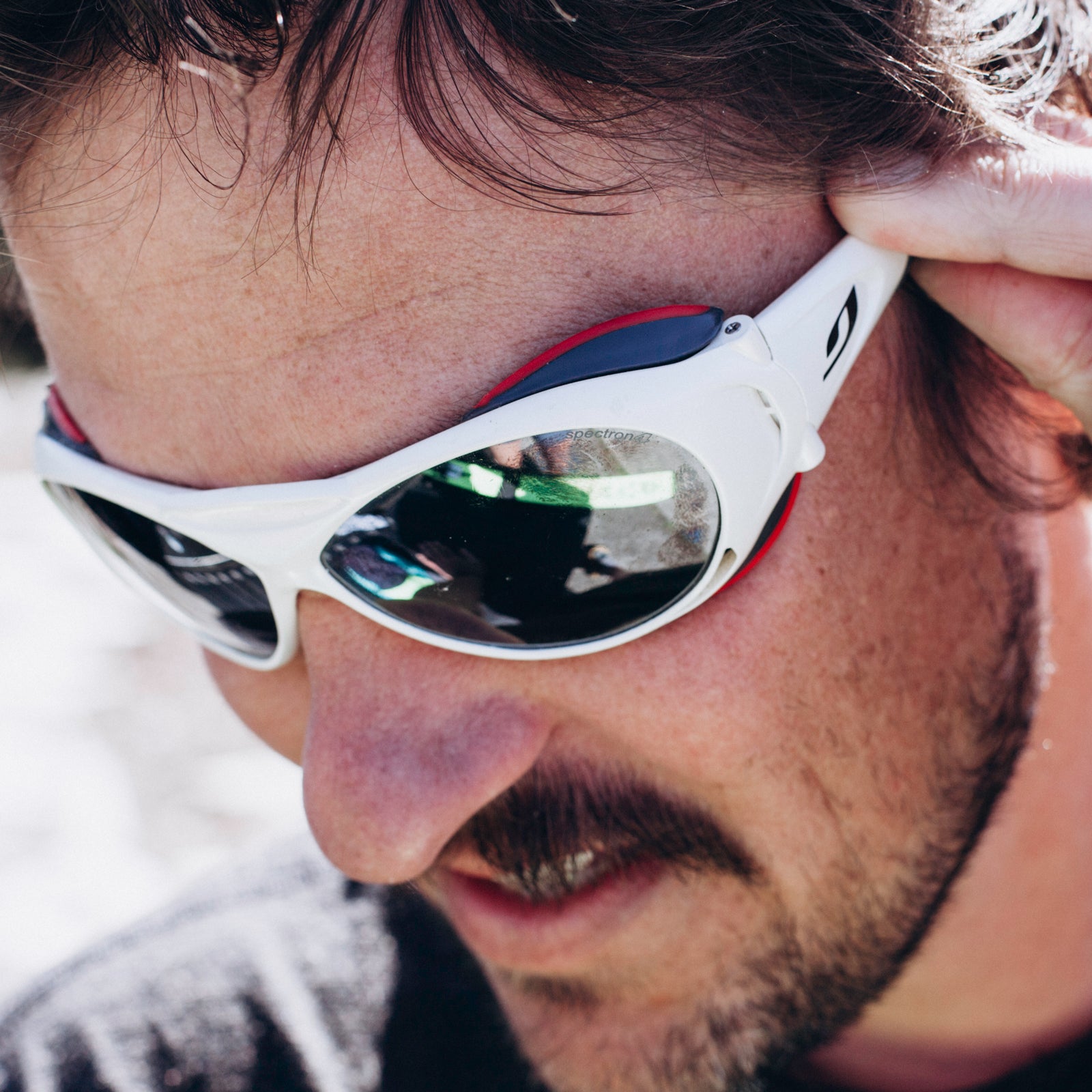I was working in ���ϳԹ���’s basement in the summer of 2012 when a coworker popped his head down and informed me that one of the senior editors was cleaning his office. “He’s getting rid of some really good shit,” he said.
The box of refuse Grayson Schaffer left outside his door had been picked over by fellow junior editors and interns by the time I got to it, but there were still some gems to be had: I scored a severely burned Jetboil pot��and a pair of glacier glasses that Schaffer wore while reporting on the climbing season at��Mount Everest that year. Nine years later, the Explorer is��still an essential part of my spring ski-mountaineering kit.
Harvesting sweet springtime corn snow during long days in the mountains is one of my greatest outdoor joys. The warm sun makes for��great conditions and often a more stable snowpack, but that sun also delivers the challenge of protecting your skin and eyes. I cannot overstate how much it sucks to scorch your peepers looking at bright snow. On really long days, harsh light reflecting off the ice creeps in the corners of normal sunnies and can leave you with a sharp headache or even temporarily impaired vision. That’s where glacier glasses come in.
Julbo, which is based in Chamonix, France, invented the category in the 1880s. “Back then, people who were crossing glaciers to look for minerals were basically wrapping towels around their face and looking through slits to get across the glaciers,” says Julbo North America CEO David Crothers. Mountaineers asked local eyewear maker��Jules Baud��for a solution, and what he came up with was the first pair of glacier glasses.
That legacy has been passed down through the Baud family, says Crothers. While the company has expanded to a wider range of performance eyewear in the past 130 years, its heritage in superior mountain sunglasses��shows in products like the Explorer. This style was the first modernized pair of glacier glasses to hit��the American market, and it is still frequently seen on slopes and peaks��around the world (although the originals were discontinued for ($150) that’s more breathable and features a better fit).
I love my OG version. The removable soft plastic sides offer complete coverage��yet breathe��exceptionally well, the result of gill-like venting at the bases of the side pieces—they don’t let light in��but do allow air to circulate. They also fit comfortably, thanks to a wide nose bridge and moldable arms, the latter of which keep��the sunglasses��secure during dynamic movements.
The only downside to the Explorer��is its��looks—I wouldn’t wear these on date night (there are other options more appropriate for that). They’re not stylish, but in the mountains, who cares? All that matters is that my eyes are rested and relaxed after I take them off, and in that regard, the Explorer always delivers.


